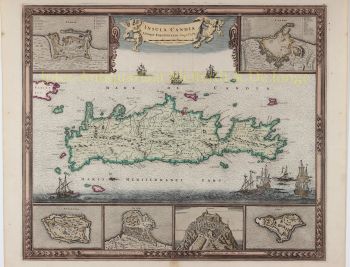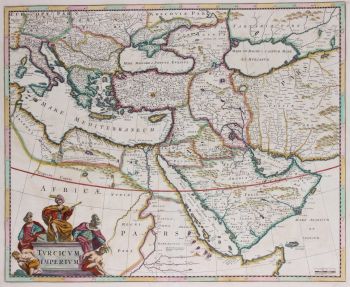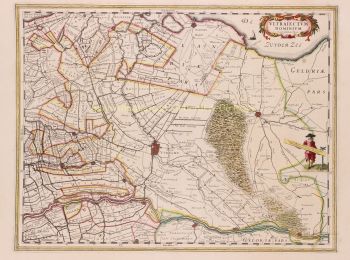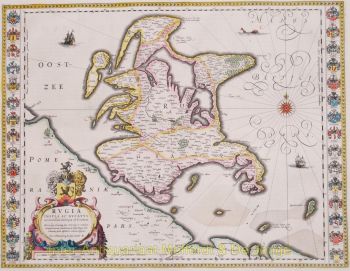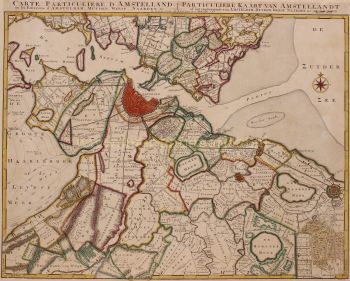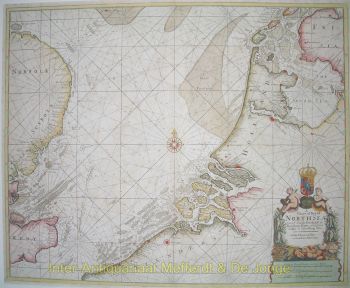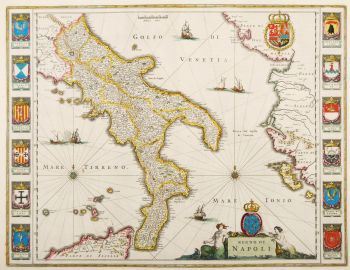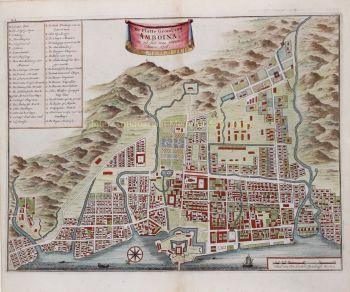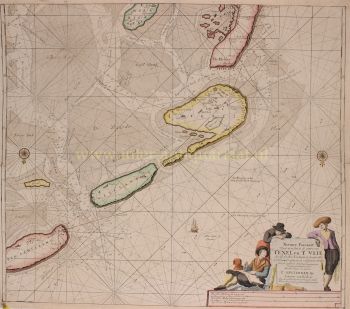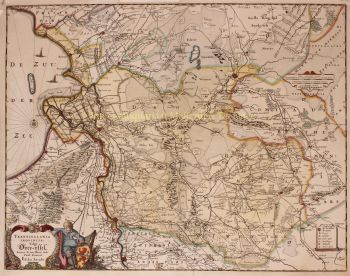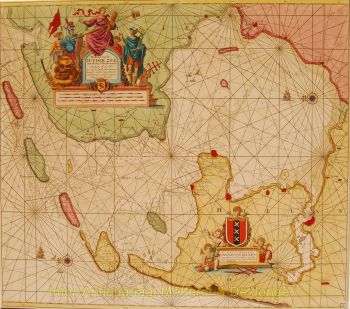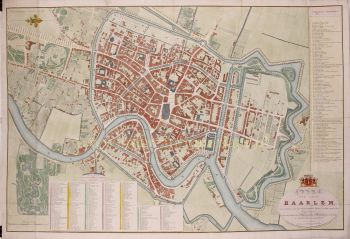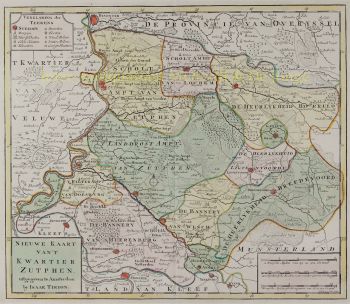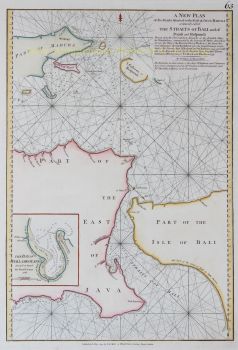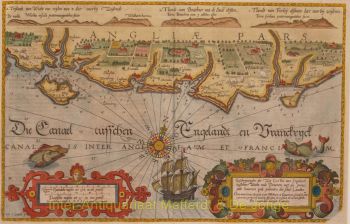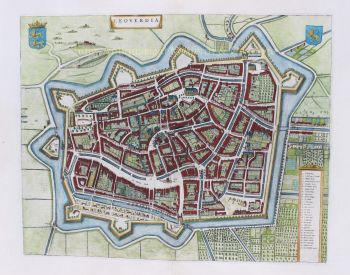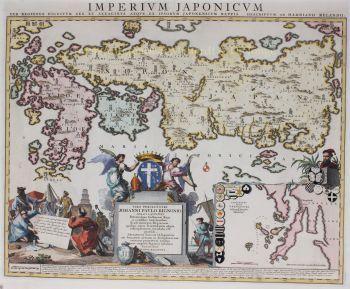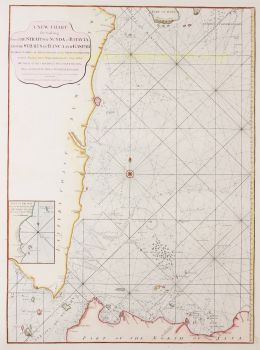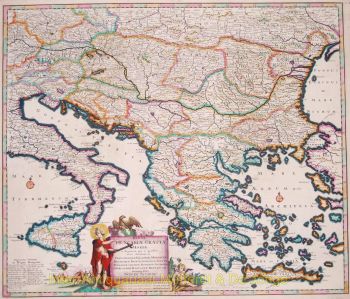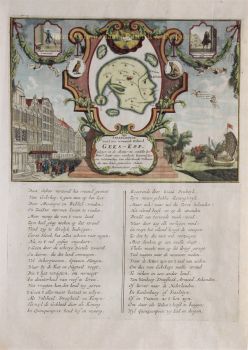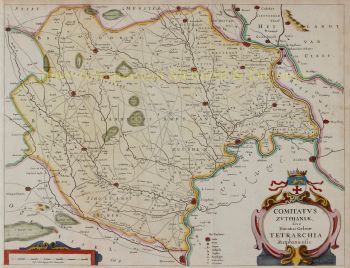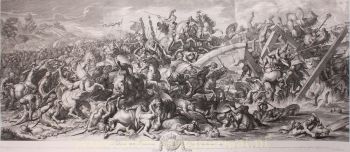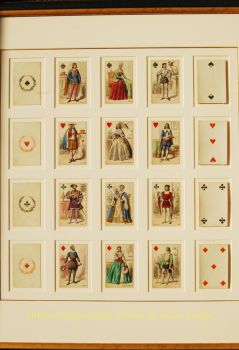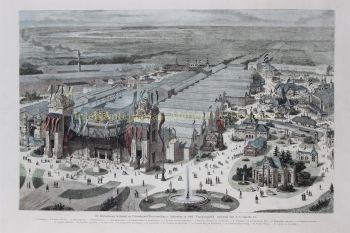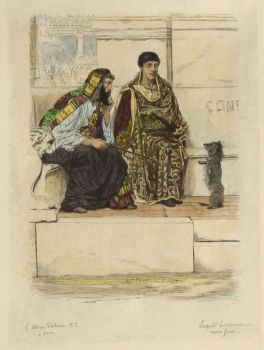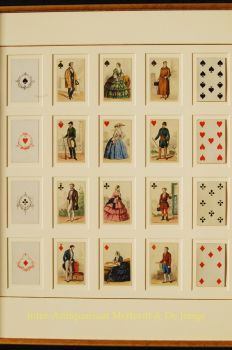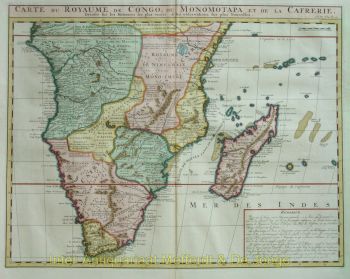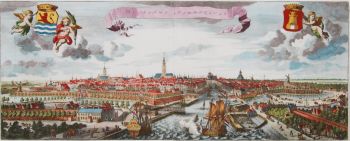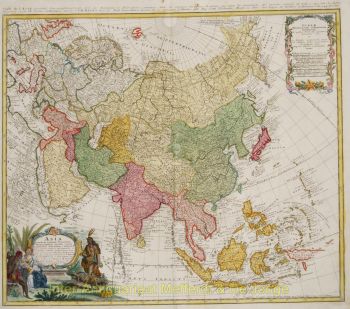Asia 1670
Frederick de Wit
€ 575
Inter-Antiquariaat Mefferdt & De Jonge
- Sobre la obra de arteNICE EXAMPLE OF DE WIT'S MAP OF ASIA "Accuratissima totius Asiae Tabula in Omnes Partes divisa, de novo Correcta " [Newly corrected, very accurate map of Asia, divided in all parts], copper engraving published approx. 1670 by Frederic de Wit of Amsterdam. Coloured by a later (?) hand. Size: 49 x 58 cm. The extent of European knowledge of the region is depicted with good detail throughout the south and south east, based on the surveys of the Dutch East India Company, while northern and central Asia is filled mostly with mountains and forests and shows the coastline of Yedso [the island of Hokkaido] above Japan. The work of the Jesuit missionaries is reflected in the well-documented region of China. In the lower right corner there is the northern part of Hollandia Nova (Australia) and a hint of New Guinea. The large title cartouche shows a busy scene with traders and their cargo. The copper plate of Frederick de Wit's map was used by the Danckerts publishing family for a reprint a few years later. Price: Euro 575,-
- Sobre el artistaFrederik de Wit nació como Frederik Hendriksz. Nació en una familia protestante alrededor de 1629, en Gouda, una pequeña ciudad de la provincia de Holanda, una de las siete provincias unidas de Holanda. Su padre, Hendrik Fredericsz (1608 - 29 de julio de 1668) era un adjunto (fabricante de mangos de cuchillos) de Amsterdam, y su madre Neeltij Joosten (m. Antes de 1658) era hija de un comerciante en Gouda. Frederik se casó el 29 de agosto de 1661 con Maria van der Way (1632-1711), hija de un rico comerciante católico de Ámsterdam. Desde aproximadamente 1648 hasta su muerte a fines de julio de 1706, De Wit vivió y trabajó en Amsterdam. Frederik y Maria tuvieron siete hijos, pero solo un Franciscus Xaverius (1666-1727) les sobrevivió. En 1648, durante el apogeo de la Edad de Oro holandesa, De Wit se había mudado de Gouda a Amsterdam. Ya en 1654, había abierto una imprenta y una tienda con el nombre "De Drie Crabben" (los Tres Cangrejos), que era también el nombre de su casa en Kalverstraat. En 1655, De Wit cambió el nombre de su tienda a "Witte Pascaert" (la carta blanca). Bajo este nombre, De Wit y su firma se hicieron conocidos internacionalmente.
¿Está interesado en comprar esta obra de arte?
Artwork details
Categoría
Related artworks
- 1 - 4 / 4
- 1 - 4 / 24
- 1 - 4 / 12



